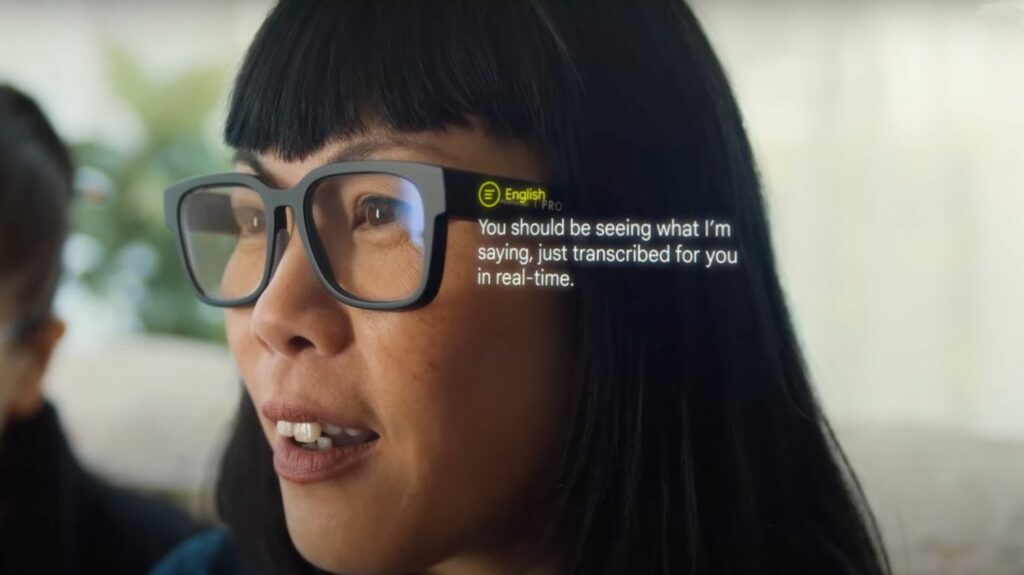The Americans speak of a “killer app”, in other words a function which we can no longer do without and which should ensure the commercial success of a product. And yet, these glasses, from the outside, have nothing that distinguishes them from a pair of classic sunglasses, aviator type, except for two details. First, their lenses are transparent. And then, when you’re in front of someone wearing them, you can’t imagine what’s going on inside.
These augmented reality glasses, which mark the second major step for Google after the failure of Google Glass, have only one known function to date: understanding others and communication. When you wear these glasses and the person in front of you starts talking, as the words come out of their mouth, their translation is displayed, in real time, on the inside of the glasses, as if you were watching a film or series in the original version with subtitles.
Augmented reality can break down communication barriers – and help us better understand each other by making language visible. Watch what happens when we bring technologies like transcription and translation to your line of sight. #GoogleIO ↓ pic.twitter.com/ZLhd4BWPGh
– Google Google) May 11, 2022
Imagine a mother and her daughter, in an admittedly somewhat special situation: this is the example taken by Google in its presentation video during its Google I/O 2022 conference in Mountain View (California), on May 11, 2022 The mom speaks only Mandarin, although she picks up a few words of English. Her daughter only speaks English. Clearly, the two women have never really been able to communicate.
Until that day when they each put on a pair of these glasses. For the first time, they start talking like never before, discovering each other’s words being displayed in real time and in the language they understand, by simply looking through the lenses of these glasses. It’s also quite surprising to watch the conversation of two people in two different languages.
Now imagine a hard of hearing person trying these glasses for the first time. Of course, these prototypes do not restore hearing to those who are deprived of it, but the world becomes instantly comprehensible. So we begin to dream of glasses capable of translating sign language and functioning as with any other language, to break the isolation.
Google did not give any details but the Mountain View giant would not stop at the hundred or so spoken languages that its Google Translate service already includes. It also has 24 more since Wednesday, May 11, with the addition of Kurdish and Sanskrit in particular.
Beyond Google, augmented reality through glasses is the next big battle for tech giants. We talk a lot about virtual reality headsets, but the real revolution to come in our lives will be augmented reality glasses like these, whose messages are superimposed on what we see and which avoid looking down smartphone screen. It is already predicted that our telephones will be replaced by glasses within 10 years.
When we talk about connected glasses, we think of Snap – previously known as “Snapchat“ – which launched its Shows in 2016 (2017 in Europe) but the success was not there.
Meta (Facebook), last September, took a first step with the Ray-Ban Stories in partnership with the famous brand of sunglasses and it is probably not over. Apple would also be on the way, by 2024 or 2025, with potentially revolutionary augmented reality glasses.

